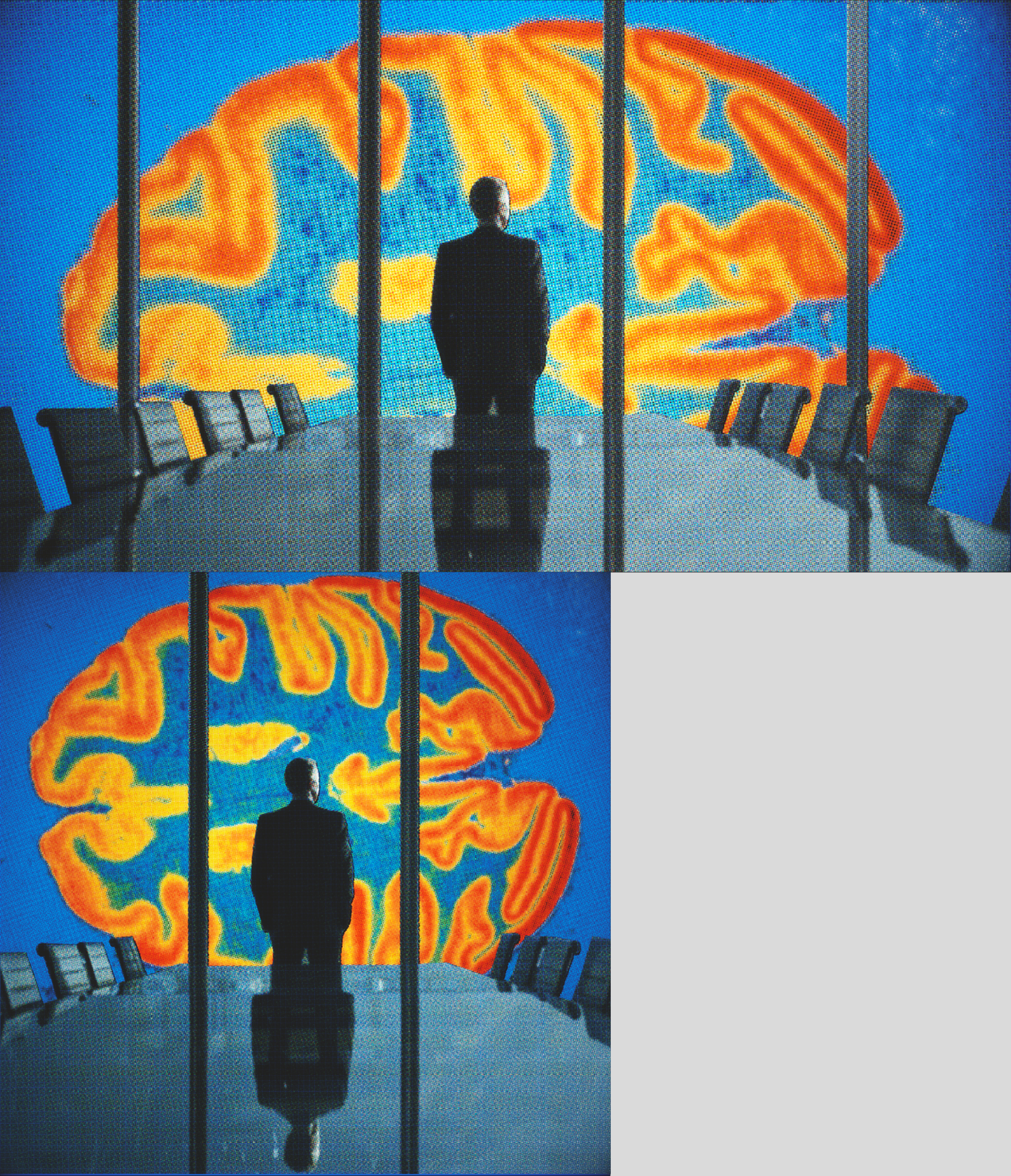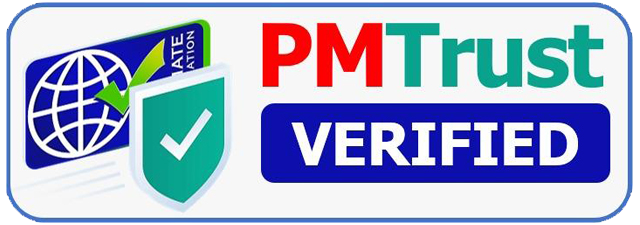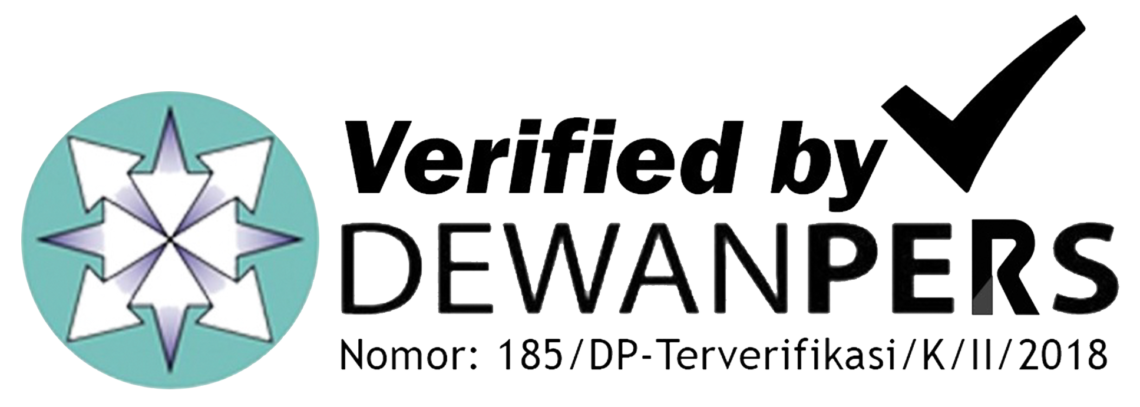[ad_1]

The MN8 electroencephalography device looks like any set of sleek wireless earphones. Its buds can rest unobtrusively in the ear’s concha for a whole workday and that, its makers at San Francisco-based Emotiv say, is the point. You and everyone around you forgets you’re wearing a device that is monitoring your brainwaves for signs of stress, focus, and attention.
The purpose of the headset, after all, is for companies to collect brain data from their employees.
The purpose of the headset, after all, is for companies to collect brain data from their employees.
The MN8 is the centerpiece of an Emotiv program promoted as a way to create safer, more efficient workplaces by monitoring the brain signals of workers and then using that data to retool the workday. The company has promoted it at a forum sponsored by Fortune Magazine and among the well-heeled at the World Economic Forum’s meeting in Davos.
Neuroscientist and Emotiv president Oliver Oullier said the data has led companies to adjust the scheduling of tasks needing high attention, improve the training process, start work days later (because morning traffic was shown, predictably, shown to heighten stress).
“We provide hardware and algorithmic solutions that have a track record of being used to inform programs that have led to allowing people to work less time, decrease absenteeism, decrease accidents and improve their productivity,” Oullier told Motherboard in an email.
Electroencephalograms (EEG) use electrodes, small metal discs that communicate with brain cells when placed on the scalp, paving a path to several kinds of information. When used in lab environments, the electrodes interact with stress hormones to create a measure of a person’s stress level. The brain also sends out electromagnetic waves of various types that correlate with attention and alertness, picked up by EEG.
Neuroscientist and Emotiv president Oliver Oullier said the data has led companies to adjust the scheduling of tasks needing high attention, improve the training process, start work days later (because morning traffic was shown, predictably, shown to heighten stress).
“We provide hardware and algorithmic solutions that have a track record of being used to inform programs that have led to allowing people to work less time, decrease absenteeism, decrease accidents and improve their productivity,” Oullier told Motherboard in an email.
Electroencephalograms (EEG) use electrodes, small metal discs that communicate with brain cells when placed on the scalp, paving a path to several kinds of information. When used in lab environments, the electrodes interact with stress hormones to create a measure of a person’s stress level. The brain also sends out electromagnetic waves of various types that correlate with attention and alertness, picked up by EEG.
Emotiv claims that all its clients sign agreements that they will not promote, demote, sanction, or fire any employees based on brain data. Emotiv would not share the wording of that agreement with Motherboard. The company also refused to name the companies with whom it has partnered, but said that its clients include businesses in the supply chain, healthcare, software, gaming, automotive and transportation industries. Oullier sells it as a more individualized and refined tool in the chase for corporate efficiency, better than “blackbox personality and cognitive tests or wellness questionnaires that organizations generally blindly trust.”
Employee monitoring tools are rarely introduced without criticism—especially when they claim to interface with the human brain. Earlier this month, Elon Musk was met with skepticism and mockery after a live demo introducing Neuralink, the tech billionaire’s foray into brain-enhancing implants.
Employee monitoring tools are rarely introduced without criticism—especially when they claim to interface with the human brain. Earlier this month, Elon Musk was met with skepticism and mockery after a live demo introducing Neuralink, the tech billionaire’s foray into brain-enhancing implants.
Similarly, some neurologists question the claim that EEG technology like the kind used by Emotiv has advanced to the point where meaningful data about workplace performance could come from two sensor electrodes utilized by corporate managers, especially when scientists using more sensitive equipment struggle for clean data.
“I’m skeptical,” said Robert Desimone, director of the McGovern Institute for Brain Research at the Massachusetts Institute of Technology. “[Electrodes] have limits, particularly outside the lab environment, that can contaminate data.”
Nevertheless, Emotiv has a long history of promoting electrode-coated headsets for use beyond scientific settings. Its products range from five-electrode-channel headbands to a 32-channel design resembling a swim cap. Its Epoc device is often used for a computer-brain interface, and Oullier hopes will allow a person to easily control a machine with their mind. Emotiv sells its EEG tech to gamers and executives trying to gain insight from their own brain data for a performance advantage.
Emotiv claims that data from past users is collected to help train algorithms, which are carefully-protected intellectual property, improving its software’s ability to analyze brainwaves. In 2019, the company released the MN8 as an EEG device that could be worn inauspiciously in a workplace.
Oullier said that, as part of the agreement between employers and Emotiv, employees are not required to participate in this program, though, again, the company would not share the specific language of the agreement with Motherboard. “The data is owned by the employee and they are empowered to share or not share their data,” he stated. “Data shared with HR are anonymized and aggregated to safeguard the employee.”
“I’m skeptical,” said Robert Desimone, director of the McGovern Institute for Brain Research at the Massachusetts Institute of Technology. “[Electrodes] have limits, particularly outside the lab environment, that can contaminate data.”
Nevertheless, Emotiv has a long history of promoting electrode-coated headsets for use beyond scientific settings. Its products range from five-electrode-channel headbands to a 32-channel design resembling a swim cap. Its Epoc device is often used for a computer-brain interface, and Oullier hopes will allow a person to easily control a machine with their mind. Emotiv sells its EEG tech to gamers and executives trying to gain insight from their own brain data for a performance advantage.
Emotiv claims that data from past users is collected to help train algorithms, which are carefully-protected intellectual property, improving its software’s ability to analyze brainwaves. In 2019, the company released the MN8 as an EEG device that could be worn inauspiciously in a workplace.
Oullier said that, as part of the agreement between employers and Emotiv, employees are not required to participate in this program, though, again, the company would not share the specific language of the agreement with Motherboard. “The data is owned by the employee and they are empowered to share or not share their data,” he stated. “Data shared with HR are anonymized and aggregated to safeguard the employee.”
Besides that agreement, the company ultimately has little control over how the technology is used in the workplace. And given that the stated goal of brainwave-monitoring in the workplace is efficiency, it’s easy to see a future scenario where a warehouse packer is denied morning shifts because a brain-monitoring device shows their attention peaks in the evening, or a manager presents color-coded brain scans to point out an employee’s low focus level at the last all-hands. Paula Brantner, an employment attorney in Silver Springs, Maryland, sees such a device as “part of a continued encroachment in the workplace of workers.’”
She noted that several companies have brought in workplace monitoring systems, all with the promise of safety and efficiency, and gotten pushback. In 2018, Amazon patented a wristband that could track the location of workers’ hands in relation to objects they pack. The company said speculation that this would allow it to monitor workers’ every movement was “misguided,” and claimed the wristbands would scan objects for the worker, saving them that monotonous task. A few companies have allowed employees to be implanted with subdermal microchips, eliminating some irritating identification checks, but stoking fears that microchipping employees like pets would become a new normal.
“In most states, employees don’t have the right to say no to these things,” Branter told Motherboard.
She noted that several companies have brought in workplace monitoring systems, all with the promise of safety and efficiency, and gotten pushback. In 2018, Amazon patented a wristband that could track the location of workers’ hands in relation to objects they pack. The company said speculation that this would allow it to monitor workers’ every movement was “misguided,” and claimed the wristbands would scan objects for the worker, saving them that monotonous task. A few companies have allowed employees to be implanted with subdermal microchips, eliminating some irritating identification checks, but stoking fears that microchipping employees like pets would become a new normal.
“In most states, employees don’t have the right to say no to these things,” Branter told Motherboard.
Joyce Smithey, an employment lawyer in Annapolis, Maryland, said that resistance to employee monitoring via new technology withers after its implementation. “In the last 20 years, we have accepted more and more monitoring as employers are given more and more ways of doing it,” she said. “We used to be worried about email monitoring. Now there are phones and cameras. Everyone seems to be accepting of it.”
Brainwave data presents a unique complication, she said, in that it could be considered medical information, protected by the Americans With Disabilities (ADA) and Health Insurance Portability and Accountability (HIPAA) acts. “It’s from electrodes. It’s biometric. It could reveal a disability,” said Smithey.
EEG is a diagnostic tool for epilepsy, tumors, brain damage, sleep disorders and more. Even if a device could not diagnose a disorder, “the ADA protects the appearance of disability,” said Smithey. A manager, perhaps overestimating their aptitude as an amateur neuroscientist, could assume an employer had a condition based on brainwave data and give them less work and responsibility. This would violate the ADA, said Smithey.
Oullier has tried to reassure that outside organizations are helping to guide Emotiv’s efforts on workplace improvement. In a November 2019 Fortune Magazine forum, he said, “We’ve worked with the World Economic Forum, the OECD and the National Academy of Medicine to make sure that what we do is legal, ethical and to improve people’s life [sic].”
Brainwave data presents a unique complication, she said, in that it could be considered medical information, protected by the Americans With Disabilities (ADA) and Health Insurance Portability and Accountability (HIPAA) acts. “It’s from electrodes. It’s biometric. It could reveal a disability,” said Smithey.
EEG is a diagnostic tool for epilepsy, tumors, brain damage, sleep disorders and more. Even if a device could not diagnose a disorder, “the ADA protects the appearance of disability,” said Smithey. A manager, perhaps overestimating their aptitude as an amateur neuroscientist, could assume an employer had a condition based on brainwave data and give them less work and responsibility. This would violate the ADA, said Smithey.
Oullier has tried to reassure that outside organizations are helping to guide Emotiv’s efforts on workplace improvement. In a November 2019 Fortune Magazine forum, he said, “We’ve worked with the World Economic Forum, the OECD and the National Academy of Medicine to make sure that what we do is legal, ethical and to improve people’s life [sic].”
Some of the organizations dispute the claim they have “worked” with EMOTIV.
A spokesperson for the National Academy of Medicine told Motherboard, “I checked with my colleagues about this, and we couldn’t confirm a formal relationship between NAM and Emotiv.”
A representative for the intergovernmental Organization for Economic Co-operation and Development (OECD) was unsure what Oullier is referring to.
David Winickoff, OECD’s secretary for the Working Party on Bio-, Nano- and Converging Technologies (BNCT) said that Emotiv CEO Tan Le was the keynote at a 2018 workshop it hosted. “I also had a one-on-one meeting with the president, Olivier Oullier to discuss possible collaborations in a general way,” Winickoff added. “He also provided comments on one of our reports. I wouldn’t say that we have ‘worked together’ in any significant way.”
The World Economic Forum, which hosted Oullier as a speaker, did not respond to an email inquiry.
A spokesperson for the National Academy of Medicine told Motherboard, “I checked with my colleagues about this, and we couldn’t confirm a formal relationship between NAM and Emotiv.”
A representative for the intergovernmental Organization for Economic Co-operation and Development (OECD) was unsure what Oullier is referring to.
David Winickoff, OECD’s secretary for the Working Party on Bio-, Nano- and Converging Technologies (BNCT) said that Emotiv CEO Tan Le was the keynote at a 2018 workshop it hosted. “I also had a one-on-one meeting with the president, Olivier Oullier to discuss possible collaborations in a general way,” Winickoff added. “He also provided comments on one of our reports. I wouldn’t say that we have ‘worked together’ in any significant way.”
The World Economic Forum, which hosted Oullier as a speaker, did not respond to an email inquiry.
When asked about the discrepancy between his public statement and the responses from OECD and NAM, Oullier wrote, “[W]e have actively participated in and made significant contributions to this conversation at a global level with many organizations over the past decade.” He did not go into specifics.
Neurology experts consulted by Motherboard questioned how much useful information two sensor electrodes, administered outside a lab by corporate managers, could reliably pick up.
Gathering data this way is not as simple as slipping an electrode-embedded device on a person’s head. Muscles in the head send out electric signals that obscure signals. “If you move your jaw, that’s a big signal,” said Desimone, the MIT neurologist. “Those muscles are all controlled by electricity. You just have to constantly separate them out” from the final results of the test. There is even a term for interfering instances of eyes blinking: ocular artifacts.
Also, subjects’ physical characteristics, like thick skulls or bountiful hair, create challenges and require adjustments, said Desimone.
And these are hindrances in a controlled lab environment, where trained neurologists and lab technicians usually use EEG caps of a dozen or more electrodes.
Desimone said he doubts a device like the MN8 would get usable information on something like attention and stress because scientists and developers are still struggling to create take-home EEG equipment for simpler purposes. Despite the obvious value, there are no widely used snap-on consumer products to monitor the tiredness of long-haul drivers or measure sleep quality.
“We still need people to come into the lab for sleep studies,” he said, “and that’s an easy one, stages of sleep are well-defined and people are asleep so they are not trying to deceive the device or twitching or moving their face too much.”
Lesley Fellows, a professor in the Department of Neurology and Neurosurgery at McGill University, said EEG scans generally don’t give deep insights to a person’s level of concentration. “I imagine that kind of simple electroencephalogram could give you the same information about drowsiness, arousal and sleepiness as you would get if you were looking at the person. That would be my guess.”
Also, subjects’ physical characteristics, like thick skulls or bountiful hair, create challenges and require adjustments, said Desimone.
And these are hindrances in a controlled lab environment, where trained neurologists and lab technicians usually use EEG caps of a dozen or more electrodes.
Desimone said he doubts a device like the MN8 would get usable information on something like attention and stress because scientists and developers are still struggling to create take-home EEG equipment for simpler purposes. Despite the obvious value, there are no widely used snap-on consumer products to monitor the tiredness of long-haul drivers or measure sleep quality.
“We still need people to come into the lab for sleep studies,” he said, “and that’s an easy one, stages of sleep are well-defined and people are asleep so they are not trying to deceive the device or twitching or moving their face too much.”
Lesley Fellows, a professor in the Department of Neurology and Neurosurgery at McGill University, said EEG scans generally don’t give deep insights to a person’s level of concentration. “I imagine that kind of simple electroencephalogram could give you the same information about drowsiness, arousal and sleepiness as you would get if you were looking at the person. That would be my guess.”
“Are their eyes droopy? Do they seem bored?” she added.
Fellows said face-monitoring cameras would be better at recording signs of stress and inattention as EEG hardware.
Oulliller said his company’s products are not meant to replicate the kind of data gathered in a lab. “The modernization of EEG systems to provide mobile and wireless data collection capabilities within a contextualized environment is not (and never meant to be) a replacement for clinical systems and in-lab data collection,” he wrote.
When asked how a user knows his system works, Ouillier said that consumers could trust the EMOTIV brand.
“[F]or a lot of services and tech, users have to trust blindly what the seller claims,” he wrote. “With us it’s different, there are scientific databases… Feel free to have a look at EMOTIV in academic databases such as google scholar.”
An independent review released this year found that Emotiv’s Epoc devices, which have 14 electrodes, were used in 382 academic studies since 210. A vast majority, 277, were for brain-computer interface. There is no publicly viewable study showing how well the miniature MN8 measures for stress and tiredness.
Desimone advised not to trust any device that hadn’t been tested with controlled research by a neutral outside researcher.The makers of commercial brainwave technology sometimes hook consumers with flashy or futuristic-seeming elements before being tested through scientific rigor, he said.
“They just want something that looks good,” said Desimone. “That’s been my impression of the consumer market for these things.”
Fellows said face-monitoring cameras would be better at recording signs of stress and inattention as EEG hardware.
Oulliller said his company’s products are not meant to replicate the kind of data gathered in a lab. “The modernization of EEG systems to provide mobile and wireless data collection capabilities within a contextualized environment is not (and never meant to be) a replacement for clinical systems and in-lab data collection,” he wrote.
When asked how a user knows his system works, Ouillier said that consumers could trust the EMOTIV brand.
“[F]or a lot of services and tech, users have to trust blindly what the seller claims,” he wrote. “With us it’s different, there are scientific databases… Feel free to have a look at EMOTIV in academic databases such as google scholar.”
An independent review released this year found that Emotiv’s Epoc devices, which have 14 electrodes, were used in 382 academic studies since 210. A vast majority, 277, were for brain-computer interface. There is no publicly viewable study showing how well the miniature MN8 measures for stress and tiredness.
Desimone advised not to trust any device that hadn’t been tested with controlled research by a neutral outside researcher.The makers of commercial brainwave technology sometimes hook consumers with flashy or futuristic-seeming elements before being tested through scientific rigor, he said.
“They just want something that looks good,” said Desimone. “That’s been my impression of the consumer market for these things.”
[ad_2]
Source link









